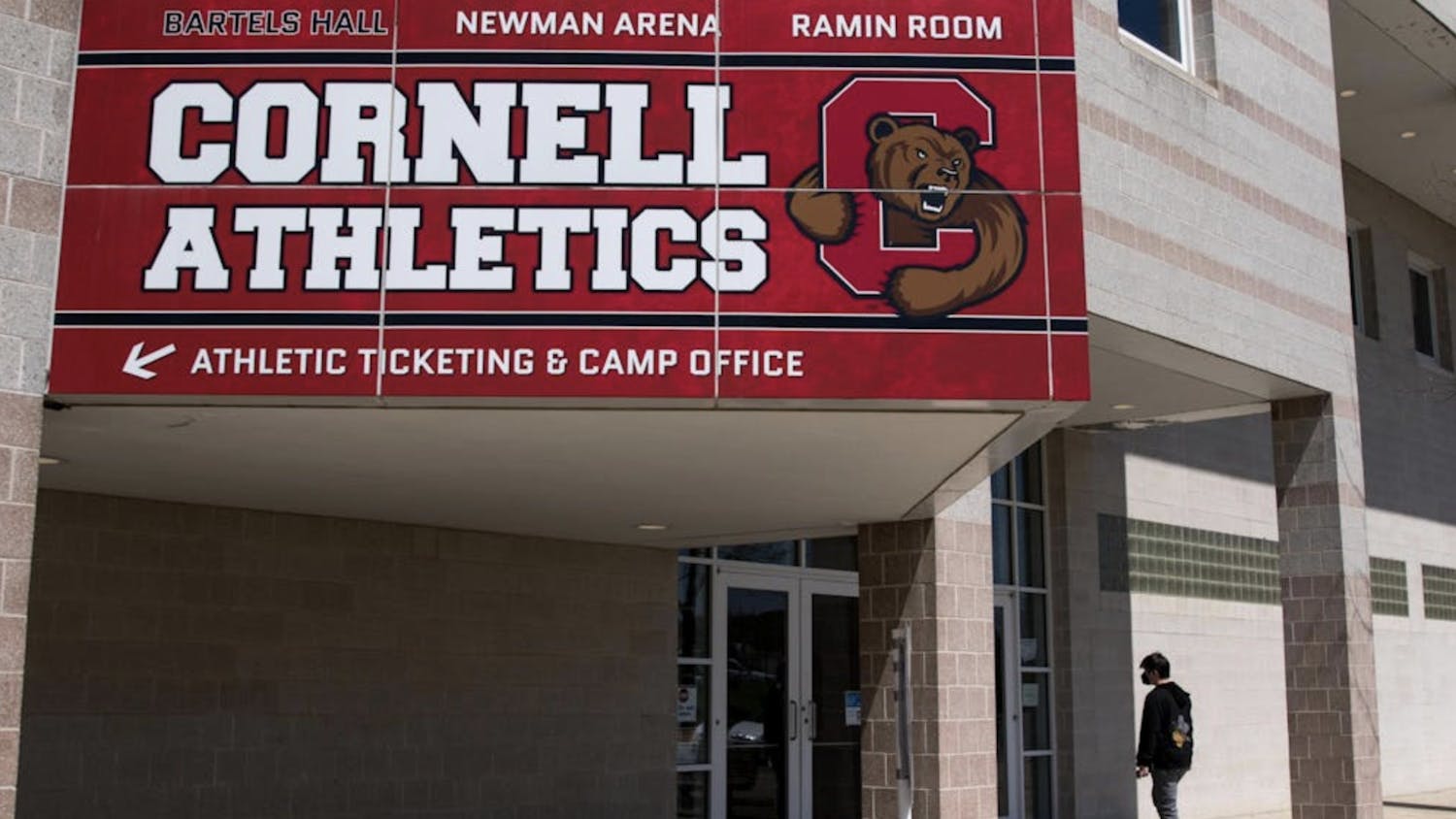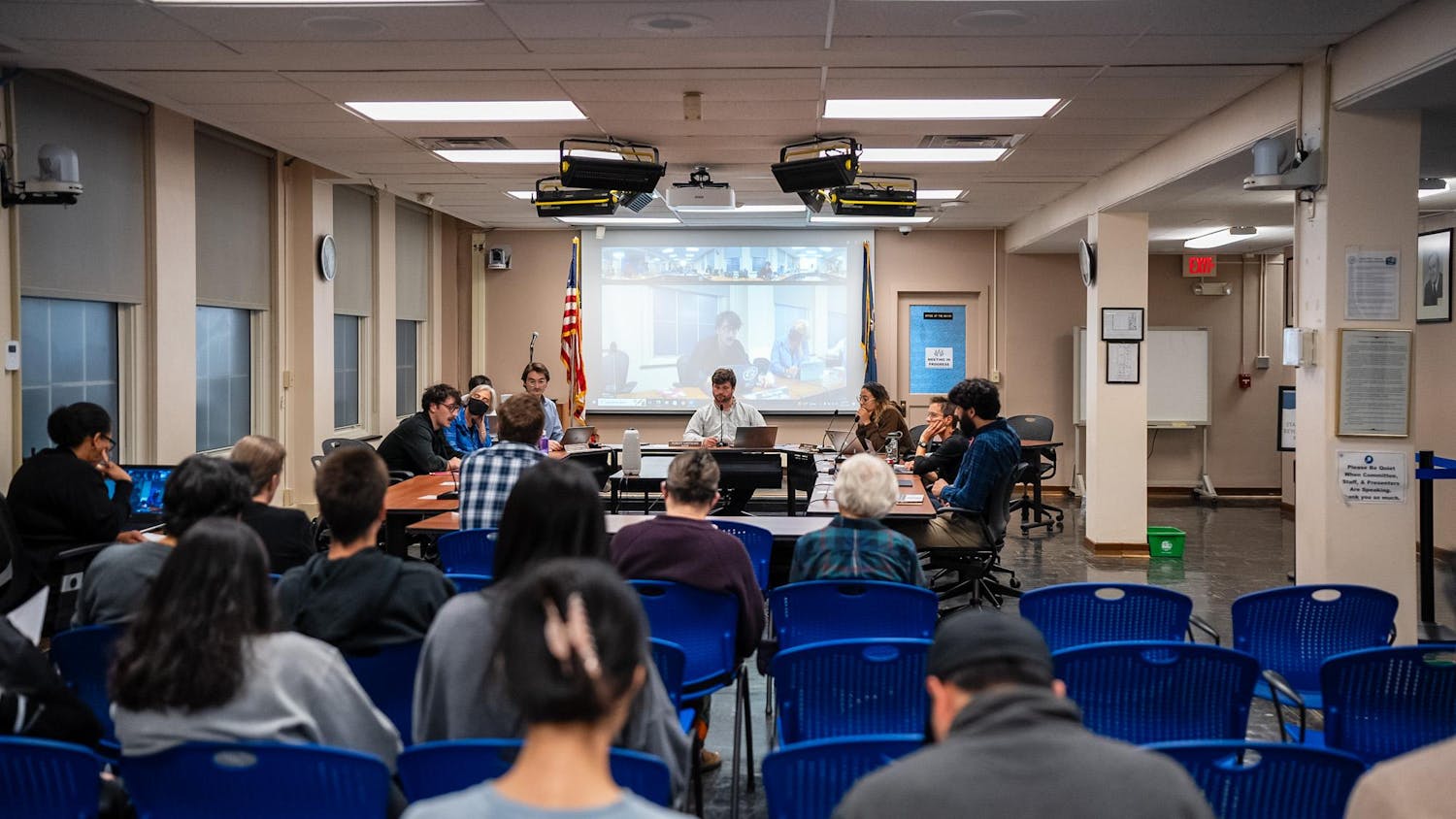Faculty members, alumni and beneficiaries gathered yesterday evening to dedicate the Joan and Sanford ’55 Weill Hall and the Weill Institute for Cell and Molecular Biology. Weill Hall — which cost $162 million to build and features state of the art equipment — will serve as the base for Cornell’s New Life Sciences Initiative and its Institute for Cell and Molecular Biology. [video:node=32759] “It would be a place where we tangibly support our efforts of sustainability. It would be a place where innovative ideas will be developed from the bench to the bedsides,” President David Skorton said at the ceremony. At the opening event, Skorton served as a moderator between Weill Hall researchers Prof. Carlos Bustamante, biological statistics and computational biology; Scott Emr, director of the Weill Institute for Cell and Molecular Biology; Prof. Claudia Fischbach, biological engineering; and Weill Cornell Medical College Prof. Anne Moscona. [img_assist|nid=32748|title=Giving credit|desc=President David Skorton addresses Sanford ’55 and Joan Weill at the dedication ceremony for Weill Hall yesterday afternoon.|link=node|align=left|width=|height=0]“The undergraduate and graduate students are the engines that drive our lab,” Emr said. For Moscona, receiving funding from the Weill family means she is given the opportunity to take risks in her research. She went on to add that that kind of support provides her with the freedom to open up her mind to something innovative and creative. Claudia Fischbach said that it is a very exciting time to be at Cornell, given the great deal of collaboration she has established with the vet and medical schools. Moscona mentioned that she and Bustamante had recently thought of collaborating on a project to study how the genetic makeup of kids relates to their susceptibility to diseases. At the ceremony, Skorton thanked the building’s benefactors, including Sam and Nancy Fleming and the Weill family, who he described as among the most generous donors to Cornell. Described as a defining chapter in Cornell’s history by Richard Meier ’56, Weill Hall was designed without any compromise. “Our concern is to provide the best work environment for students and faculty,” where communication is encouraged, and interdisciplinary work is fostered. According to Emr, “The building is beautiful, laboratories are spectacular and the facilities are at the top of the line.” He added, “Biomedical sciences have become a competitive business. For universities to compete they have to offer best space and resources, and Cornell is spending a huge amount of money towards it.” Emr added that, “For the dollar, Cornell still offers a spectacular undergraduate education. The brand new buildings tell you [that] you are looking to tomorrow.” Just after 5 p.m., the large congregation witnessed the cutting of DNA, which stood in for the iconic ribbon cutting. Following the cutting of DNA, an a cappella group in white lab coats entertained the huge congregation. “Weill thing. We think we love you. You make us feel alright; we thank you,” they sang, in the vein of the popular song, ‘Wild Thing.’ Peter Rodway ’09 said, “I think it was great. [It was] really nice to see the trustees as well as the support from all the alumni and the undergraduates.”
Weill Hall Opens Doors to Serve Life Sciences
Reading time: about 3 minutes
Read More










